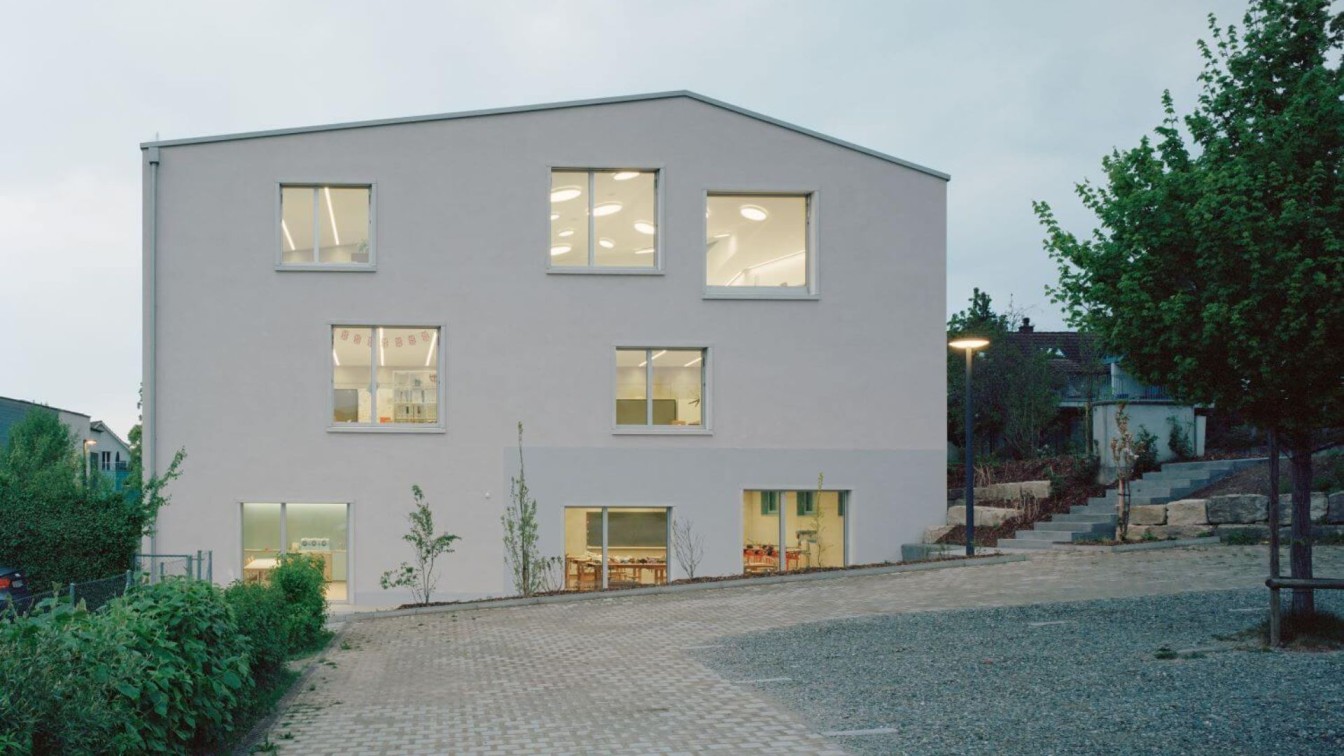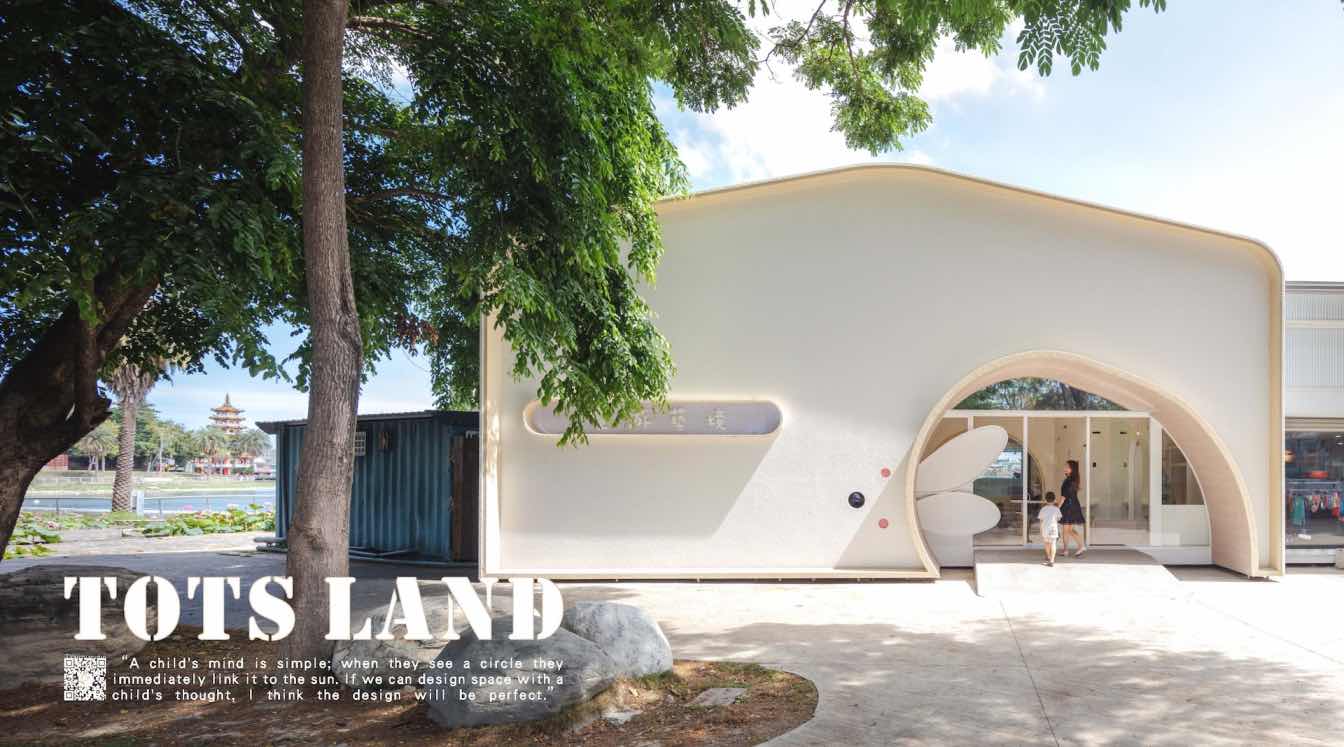AndBlack: A harbinger of architectural influence on moulding the creation of upcoming educational environments.
In a region where traditional education systems dominate the sector, Bloomingdale International School in Vijayawada, highlights the transformative power of parametric architecture in pushing the boundaries of education and challenging the conventional norms. It is the first-of-its-kind institute, and the only International School in the state of Andhra Pradesh, India, that has: in its core value a vision to provide education that is unconventional by standards; in its heart to go beyond what other pre-schools in the region provide; and in its brief to bring a paradigm shift in the early education through thoughtful architectural design.
The pre-school occupies a 4000 sq. ft. area within the campus, adjacent to an existing school building, yet placed at a convenient distance to allow the new structure to leave an impression on its users. Connecting the two buildings is a sunken courtyard, whose form follows the topography of the site, ascending towards the new extension as if climbing a hill. This site arrangement, along with the need to cater to about 100 pre-schoolers, offered the architects a unique opportunity to develop something that was unique to the site. The outcome is a design that challenges the notion of what a school should be. It does so by bringing the built form, landscape, and interiors together into a single entity, using non-conventional spatial organisation, modern technology, and robust materials.
In line with its vision, the architecture of Bloomingdale International School breaks away from the typical school design norms. Instead of the usual box-like classrooms, the layout envisions classrooms as fluid, interconnected spaces that foster free movement and interactions. Its design seamlessly merges spaces for playing and learning, blurring the lines between the two. The courtyard adds to this effect by adapting itself as a playground, a classroom, an amphitheatre or a puddle pool as the function demands. This unique spatial experience is further enhanced by the use of full-height glass panels in place of walls and skylights on the roof. By doing so, the design completely eliminates the understanding of what is inside and what is outside, thereby making the landscape an extension of the built space and vice versa.
Another point of departure from conventional school architecture is the design’s reliance on built form instead of bright colours to generate visual interest. Central to this idea lies the thought: “the building, instead of being a part of the landscape, should be a form of the landscape in itself.” This is evident by the curved, undulating roof emulating a wave or perhaps rolling hills. When one views this building from a distance, the viewer can immediately catch glimpses of the landscape beyond, making the building seem like a part of the scene itself. A closer look reveals the real ingenuity of the design: kids inhabiting the building, as if protected within a cocoon.
The fluid form of the roof – covered in turf and resting on an unobstructed structural space devoid of any internal supports or partitions – has been conceptualised using computational tools. Its ingenuity lies in how the green surface outcasts the rest of the built form, making it a landmark in the area. Even more surprising, is the fact that the structure itself has been realised within a limited budget by adopting an efficient construction process that considers readily available resources and technologies.
Another critical aspect of the design is its reliance, especially on prefabricated materials. The structural core of the roof has been erected on-site using prefabricated metal sections and construction techniques that involved directing built-up beams along the X and Y axes. The required curvature has been attained by varying their heights at pre-calculated junctions. Structural complexities in achieving the external skin were resolved using ferrocement integrated with prefabricated metal circular hollow sections, which contribute to the structure’s overall tensile strength.

When this structure is viewed from inside, the roof creates a captivating sense of wonder and mystery at the same time. Exposed structural elements along the ceiling present a beautiful contrast to the exterior turfed surface, thereby allowing the true character of materials to shine. The visual effect of this austere material palette is heightened by natural light dissipating through the skylights, punctuating the seamless curvature at regular intervals. The movement of the light and shadow, diffusing in the classroom across the day, adds another playful element to the design.
What makes the architecture of this school unique is the honesty in its structural expression, innovation in design and the resoluteness in its unconventional approach, where every part has been thoughtfully designed to reinvent the concept of educational spaces. The use of full-height glass panels and turfed roof; fluid spatial organisation of classrooms; reliance on pre-fabrication and computational technologies; and a parametric architectural form, deviate from ‘typical box building’, creating a distinct, non-conformist and playful structure that could keep childlike curiosity alive. In doing so, Bloomingdale International School stands as a harbinger of the power of architecture in shaping the design of future educational spaces.
Designer’s Note:
The fluid form was accurately constructed with a limited budget through prefabricated metal circular hollow sections. The intriguing, exposed structural elements along the ceiling contrasts the exterior turfed form. To achieve an external continuous skin, a ferrocement surface is integaretd with bent metal circular hollow section strcutural system. Built-up beams are directional and optimized along X,Y axes. The height of beams vary at each unique junction to accommodate curvature at that intersection. Computational tools were extensively utilized to streamline the fabrication process. Structural honesty allows the primary structure to contribute character to the space from the interior. The design process was mindful of available resources and accessible technologies to arrive at an efficient construction plan.





























